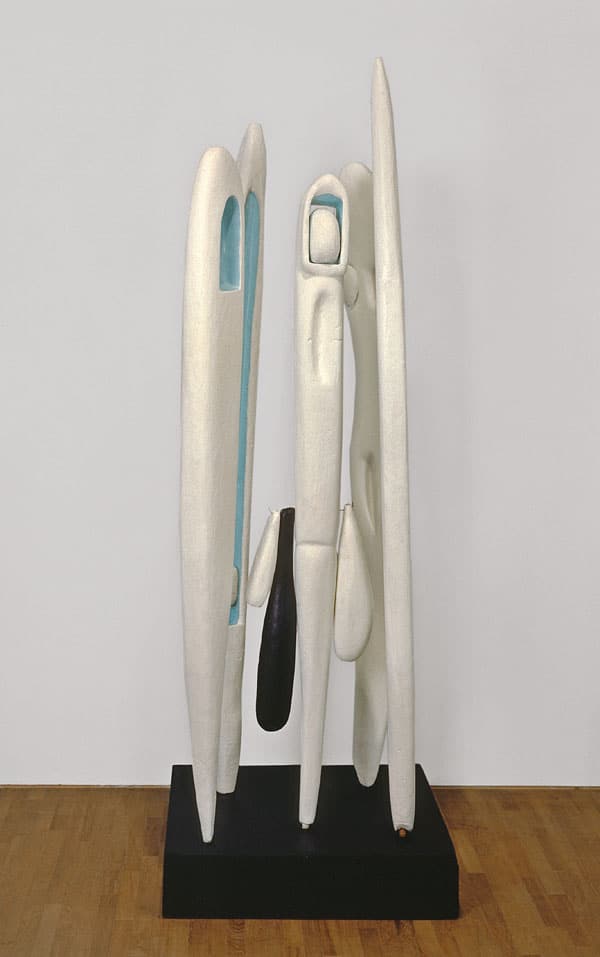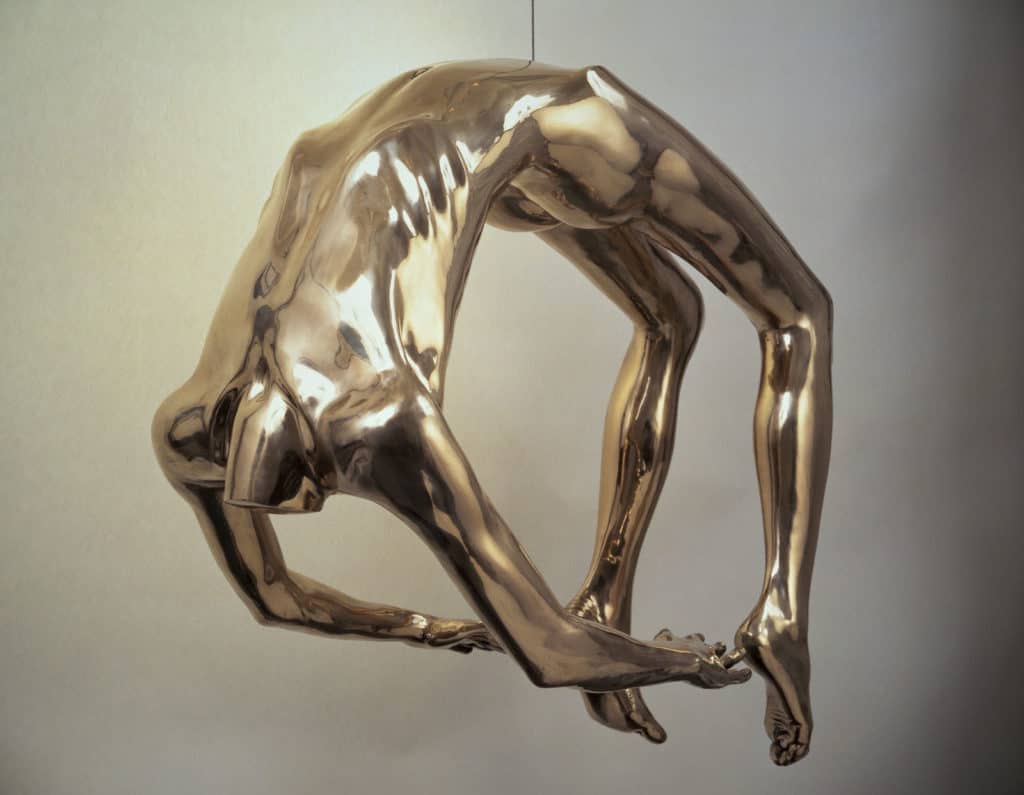Articles and Features
Female Iconoclasts: Louise Bourgeois

By Shira Wolfe
“My work deals with problems that are pre-gender. For example, jealousy is not male or female. I do not believe that there is a feminist aesthetic.”
Louise Bourgeois
Who was Louise Bourgeois?
In our article series “Female Iconoclasts”, we celebrate women artists who were among the most boundary-breaking iconoclasts of our time; women who defied social conventions in order to pursue their passion and contribute their unique vision to society. This week, we feature contemporary artist Louise Bourgeois, the provocative French-American sculptor who pushed the boundaries of emotion and form in her sculptures.
Biography of Louise Bourgeois
Youth in Paris
Born into a well-off family of tapestry weavers who restored medieval and renaissance tapestries in their workshops and sold them in their gallery in the centre of Paris, the young Louise spent a great deal of time drawing and soon began helping out in her parents’ workshop by drawing the missing parts of tapestries as a template for the stitching.
At the same time, she was absorbing the complex emotional influences of her surroundings. Her father had an explosive temper, dominated the household, and teased Bourgeois in front of others, which she experienced as deeply humiliating. In addition, he was a serial adulterer, and carried on an affair with the family’s English governess. This marked Bourgeois for a lifetime, and her art would continue to draw on her childhood experiences of mistrust, betrayal, anger and suffering. In 1974, Bourgeois created one of her most difficult and confrontational sculptures dealing with her father-issues, entitled “Destruction of the Father,” which seemed to be composed of body parts.
Art School and Fernand Léger
At the age of 18, Bourgeois started a degree in mathematics at the Sorbonne, but switched to an art degree after the death of her mother. When her father refused to support her, she secured free tuition by acting as a translator in classes with American students. She soon started working in the studio of Fernand Léger, who was quick to observe, judging by her drawings, that she should be a sculptor, not a painter. She opened a print shop next to her father’s tapestry gallery, and one day, the American art historian Robert Goldwater walked in, purchased a few Picasso prints, and over conversations about art, they fell in love and got married. In 1938, they sailed to the US, where Goldwater was a professor of art at New York University.

Louise Bourgeois in New York
In New York, Bourgeois studied at the Arts Students League and started participating in print exhibitions. In 1941, she began to make large wooden sculptures on the roof of her building. She received her first solo show in 1945, showing 12 paintings at Bertha Schaefer Gallery in New York. Her work was also included in the first Whitney Annual. The first solo show of her sculpture came in 1949 at New York’s Peridot Gallery. Though she joined American Abstract Artists in 1954 at the height of Abstract Expressionism and showed alongside Abstract Expressionist artists at Peggy Guggenheim’s gallery, her style remained distinct from the developments in the New York School. She was never truly affiliated with any art movement, which perhaps contributed to the fact that for a long time in New York, though she did show her work, she was mainly known as the wife of Robert Goldwater.

Louise Bourgeois’s art: style and themes
Although Bourgeois would sketch and draw every single day, it was in sculpture that she would truly establish herself as the iconic artist we know today. Bourgeois’s sculptural works evolved from her earlier totemic wood pieces to dramatic, organically shaped sculptures. Alternating between forms, materials and scale, moving between figuration and abstraction, versatility became a key part of her approach and vision. Yet the themes remained consistent;: loneliness, jealousy, anger, fear, family, sexuality, the body, and death. And she would often return to her childhood memories and issues with her father and the nature of his betrayal.
For “Destruction of the Father” (1974), Bourgeois bought chunks of mutton and beef on the bone, and cast them in plaster first, then covered the plaster with latex rubber. The pieces were placed in a cave-like structure which was illuminated with red light. According to Bourgeois, the “Destruction” piece was like a dream in which the children turn on the father at the dinner table, and dismember him. Through aggression in her art, she was able to purge herself of fear.

Recognition: the MoMA retrospective
In the 1950s, the Museum of Modern Art in New York purchased one of her pieces, and she showed in Paris and at the Whitney Museum. In 1966, art critic Lucy Lippard saw her works and was startled by their power, including them in a show at Fischbach Gallery. By the 1970s and 1980s, the focus in the art world started to shift away from its concerns with formal issues and started to become more open to different kinds of imagery and content. The art world was finally really ready for the intensity of Bourgeois’s work.
In 1982, when she was almost 70, Bourgeois finally took centre stage with a major retrospective at the Museum of Modern Art. This gave her new energy to forge ahead, becoming known as one of the most inventive and disturbing sculptors of the century. In the ‘90s, she started making her “Cells” – a series of architectural spaces which are deeply psychological microcosms, presenting different objects and sculptural forms within various enclosures. They represent different types of pain and deal with the notion of voyeurism.
After the MoMA retrospective, Bourgeois became the first artist to tackle a commission for a temporary work to fill the spaces of the turbine hall of Tate Modern, now known as the biggest institutional commission in contemporary art.. Featured in Tate Modern’s inaugural exhibition were her three 30-foot-high towers called “I Do, I Undo, and I Redo.” These pieces were accompanied by Bourgeois’s by now iconic gargantuan spider sculpture “Maman.”
“Like a spider, my mother was a weaver. Like spiders, my mother was very clever. Spiders are friendly presences that eat mosquitoes. So, spiders are helpful and protective, just like my mother.”
Louise Bourgeois

Louise Bourgeois’s spiders
Bourgeois began to use the spider as a central image in her art in the late ‘90s. The largest of the spider series is called “Maman” (1999), meaning “Mom” in French. It was made for the opening of Tate Modern in May 2000, as part of Bourgeois’s commission for the Turbine Hall. The sculpture, over 30 feet in height, is so large that it can only be installed outdoors, or in a building of industrial scale. The spider’s body is suspended high above the ground, supported on eight slender legs, enabling the viewer to walk around underneath it. A meshed egg sac contains 17 white and grey marble eggs, hanging above the viewer’s head. About “Maman,” Bourgeois explained:
“Like a spider, my mother was a weaver. My family was in the business of tapestry restoration, and my mother was in charge of the workshop. Like spiders, my mother was very clever. Spiders are friendly presences that eat mosquitoes. We know that mosquitoes spread diseases and are therefore unwanted. So, spiders are helpful and protective, just like my mother.”
Another monumental spider was later placed in New York’s Rockefeller Plaza, and others have made their way across the globe, from Havana to Bilbao, St Petersburg and Seoul.

Louise Bourgeois is seen as one of the most innovative, provocative and completely original artists of our time. Her art has had a huge impact on artists after her, and her complexity of style anticipated the concerns of a younger generation of artists to come.
Where to find Louise Bourgeois’s work?
After her big MoMA retrospective, she has been celebrated in many important museum retrospectives, including the Guggenheim Museum Bilbao, the State Hermitage Museum, Saint Petersburg, Tate Modern, and the Guggenheim Museum New York. Her achievements have been recognised by numerous prizes, including the Grand Prize in Sculpture from the French Ministry of Culture (1991), the National Medal of Arts (1997), and the Woman Award from the United Nations and Women Together (2007). Today, her works are part of prestigious worldwide, such as the Art Institute of Chicago, the Whitney Museum of American Art in New York, the Tate Gallery in London, and the Kunstmuseum Basel.
Relevant sources to learn more
Explore the work of other contemporary artists whose ideas and practices have greatly influenced the times we live in:
Ruth Asawa
Joseph Beuys
Sophie Calle
Dan Flavin
Guerrilla Girls
Damien Hirst